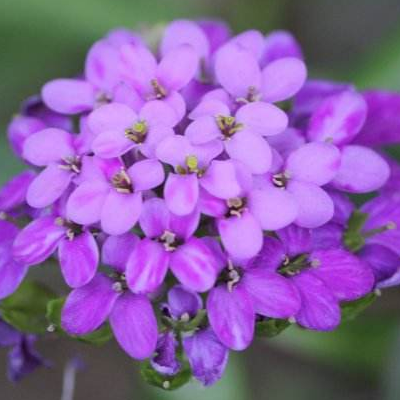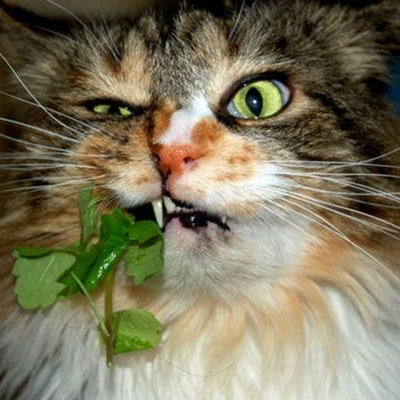What is the maintenance method of the florescence of qu qu Hua?
Qu Hua, this is a kind of plant, this qu Hua is super like by many people, when is the florescence of this qu Hua? How to maintain the florescence of qu flower:

The florescence of qu flower:
Qu qu Hua is a plant that blossoms in spring and summer, and its flowering period is usually in May.
The flower of qu qu flower is usually purple or white. It is a cruciferous family with four petals and a fragrance.
Flexion flowers can be used as a combination of potted flowers for ornamental, can also be used for flower border layout and rock garden.
Maintenance of the florescence of Quhua:
When cultivating qu Hua, it should be noted that if too much fertilizer is applied, it will lead to the overgrowth of its branches and leaves.
Fertilize, but if the fertilizer is insufficient, the branches and leaves will be slender, the leaves will turn yellow, and there will be little or no flowering. Therefore, in the fertilization must be timely and appropriate amount of fertilizer. In the vigorous growth period of spring and summer, you can apply more fertilizer, reduce fertilization in autumn, and stop fertilization in winter.
In order to make qu flower bloom better, it needs to be pruned, which is usually pruned after flowering, and the failed flower can be cut off to prolong its flowering period.
About the florescence of qu flower and the maintenance method of qu flower florescence is introduced here, do not come to breed as soon as possible.
Culture methods and matters needing attention of qu qu Hua
Selection of pot soil for the culture of qu qu Hua
Qu flower can choose loose and fertile sandy soil rich in humus when potted, or it can be configured with garden soil and fine sand and add some base fertilizer. The flowerpot should be suitable for the size of the flexion flower and should be replaced with the growth of the flexion flower.
Light and temperature
Qu flower likes the sunny growth environment, more cold-resistant, avoid hot. During the growing season, qu flowers need to be exposed to sufficient light and can be placed outside in a sunny place for maintenance. The suitable temperature for the growth of qu Hua is between 15 ℃ and 35 ℃. We should pay attention to the hot summer.
Watering and fertilizing
Buckling flowers avoid drought and waterlogging, watering should be moderate, keep the basin soil moist in spring and winter, water every morning and evening in summer and autumn, and increase watering when there is high temperature and little rain. It is also necessary to master a certain amount of fertilization. if you apply too much fertilizer, it will make the plants grow too long. on the contrary, too little fertilization will make the plants grow poorly, yellowing leaves and reduce flowering. In the peak period of growth in spring and summer, more fertilization is needed. In autumn, the growth slows down and fertilization can be reduced. The plants are dormant in winter and can not be fertilized.
Reproduction method
In the propagation of qu flower, bulbs are produced with bulbs, which can be cultivated with bulbs, scales, bulbs and seeds.
Matters needing attention in the cultivation of Quhua pruning
Flexion flowers need to be adjusted during their growth. When emergence, only leave the sturdy stem, in the growth process, to cut off part of the flower buds and buds to promote plant growth. After the flexion flower blossoms, it is also necessary to cut off the residual flowers, which can prolong the florescence of the flexion flower. It is also necessary to cut off the over-long branches, over-dense branches and withered branches of the flexion flowers at any time to ensure the good growth of the flexion flowers.
Change the basin
Potted curved flowers need to change pots and soil every 2 to 3 years, which is beneficial to the further growth of plants.
Diseases and insect pests
The diseases and insect pests of Quji flower mainly include Botrytis cinerea, black spot, rust, grubs, aphids and so on, which need to be sprayed.
Iberis umbellate flexion flower guide: how to cultivate flexion flower / how to propagate flexion flower business card flexion flower culture method and precaution introduction of flexion flower widely cultivated horticultural ornamental plant Iberis umbellate buckled flower, native to southern Europe, 2012, its inflorescence is flat, blossoms in late summer, pink, purple, white, purple or red. The plant is 40 cm tall, the leaf blade is narrow and long, and the carpels are round. I.amara has thick, parted leaves; the flowers are large, white, often pinkish and fragrant, with a stalk 22 cm (9 inches) long. Grows on chalky slopes and fields. I.saxatilis and I.sempervirens are two kinds of ground-growing, evergreen, perennial and white-flowered flexion flowers, both of which are found in the open areas of southern Europe and are widely cultivated in gardens. The distribution area of Quhua native to Central Europe and the Mediterranean, it has been introduced and cultivated artificially. The garden use of qu qu flower is suitable for the layout of rock gardens, flower beds, flower borders or potted plants. The cold-tone floret with great wild interest has strong vitality and self-sowing power, which can control the florescence by adjusting the sowing time, so that it has good compatibility with other flowers and is suitable for all kinds of wild flower combinations. The morphological characteristics of qu qu flower are fragrant, plant height 20 ~ 75 years, autumn sowing, flowering from April to June, spring sowing, flowering from July to September, 15 days germination, straight root system, multi-direct seeding, transplanting with soil, protection in cold areas, extensive management, potted plants, flower borders and wild gardens. Western European traditional cut flower materials, seeds can be preserved for 3 years. Cultivation techniques of IberisintermediaGuersent. The technique of rapid propagation in vitro was studied. Through orthogonal experimental design combined with analysis of variance and multiple comparison, the key influencing factors, existing problems and solutions, optimum culture formula and culture procedure of lanceolate leaf flexion flower in vitro culture were discussed. as a result, the rapid propagation system of lanceolate leaf flexion flower was established, which laid a foundation for further research of this plant in the future and provided a technical basis for industrial seedling cultivation. Through the study, it is concluded that: (1) the best sampling period for stem segments and leaves of flexion flowers is from March to May. (2) in the way of sterilization, 0.1%HgCl2 treatment with 5min was the best for stem segments, and 3min treatment with 0.1%HgCl2 treatment was the best for leaves. (3) in the screening of primary hormone ratio, the most suitable formula combination of stem segment was MS+6-BA0.5mg.L-1+NAA0.5mg.L-1+IBA0.1mg.L-1, the initiation rate was 70.12%, the callus induction rate was 52.65%, the budding index was 5.36, and the contamination rate was 36.12%. The optimum formula combination of leaves is: MS+6-BA2.0mg.L-1+NAA0.01mg.L-1+2,4-D0.1mg.L-1, the start-up rate is 100%, the callus induction rate is 93.73%, and the quality of callus is good. (4) subculture and proliferation culture: the optimal combination for adventitious bud proliferation culture was MS+6-BA2.0mg.L-1+IBA1.0mg.L-1, the multiplication ratio was 5.5times, the effective seedling number was 3.4, the seedling was green and robust, and the optimum formula for callus proliferation was MS+6-BA2.0mg.L-1+NAA0.01mg.L-1+2,4-D0.1mg.L-1, the multiplication multiple was 3.59, the callus was dark green and dense in texture. The optimum combination of callus differentiation was MS+6-BA2.0mg.L-1+NAA0.01mg.L-1, the regeneration rate was 90.48%, and the number of adventitious buds was 7. (5) rooting culture: the basic medium type was improved MS, sucrose concentration was 25g.L-1, activated carbon concentration was 2g.L-1, hormone combination was 6-BA0.01mg.L-1+NAA0.05mg.L-1+IBA1.0mg.L-1, rooting rate was 92.38%, rooting number was 8.19, rooting length was 3.63cm, plant was strong. (6) Seedling training and transplanting, the best substrate was perlite: vermiculite: river sand at 1:1:1, and the survival rate was 86.73%. The disease control of qu flower mainly includes black spot, gray mold and rust, which can be controlled by spraying 500 times of 25% carbendazim wettable powder. Insect pests are harmful to grubs and aphids and can be sprayed with 1000 times of dichlorvos EC. There are many diseases and insect pests of ghost lilies, and the most common diseases are soft rot, rot, mosaic disease, anthrax, root tick and grub. The specific symptoms and prevention and treatment methods are: corruption: the bulb turns gray first, then blackens and softens. The prevention and control methods are as follows: pay attention to drainage and moisture prevention; spray Bordeaux solution once every 10 days after emergence for 3 or 4 times in a row. Bulb rot: the bulb is damaged with brown spots. Control method: mix seeds with 0.5% (ball weight) pentachloronitrobenzene and irrigate 1 gram with 50% Dysenamine 200 × 400 times. Root honeylice: small, white 1 mm long, mainly harmful to the base of the bulb. Control method: fully mature basal fertilizer was applied, and the bulb was soaked in warm water for 50 seconds before planting, and the water temperature was 50-55 ℃. Grubs: larvae. Control method: remove the larvae from the fertilizer and catch them manually. The method of propagation of flexion flower the method of cultivating flexion flower is to use seed bulb to produce flexion flower bulb. Bulbs are generally cultivated from bulbs, bulbs, scales and seeds. Qu qu Hua pictures
- Prev

How to use cat mint and how to grow it?
Cat mint, this is known to many people, this cat mint is mainly aimed at cats, how to use this cat mint? How to grow cat mint: how to use cat mint: cat mint, it smells cool. Dry the plant and grind it into pieces and put it in a cat toy.
- Next

How much is the planting technique of potted sweet-scented osmanthus trees?
Sweet-scented osmanthus tree, this is what many people like, especially when blooming, that is fragrant, potted sweet-scented osmanthus tree planting technology is what? Bonsai sweet-scented osmanthus how much a pot: potted sweet-scented osmanthus planting techniques: potted sweet-scented osmanthus should choose short and strong plants. A plant with a thicker trunk and symmetrical branches and leaves
Related
- Fuxing push coffee new agricultural production and marketing class: lack of small-scale processing plants
- Jujube rice field leisure farm deep ploughing Yilan for five years to create a space for organic food and play
- Nongyu Farm-A trial of organic papaya for brave women with advanced technology
- Four points for attention in the prevention and control of diseases and insect pests of edible fungi
- How to add nutrient solution to Edible Fungi
- Is there any good way to control edible fungus mites?
- Open Inoculation Technology of Edible Fungi
- Is there any clever way to use fertilizer for edible fungus in winter?
- What agents are used to kill the pathogens of edible fungi in the mushroom shed?
- Rapid drying of Edible Fungi

